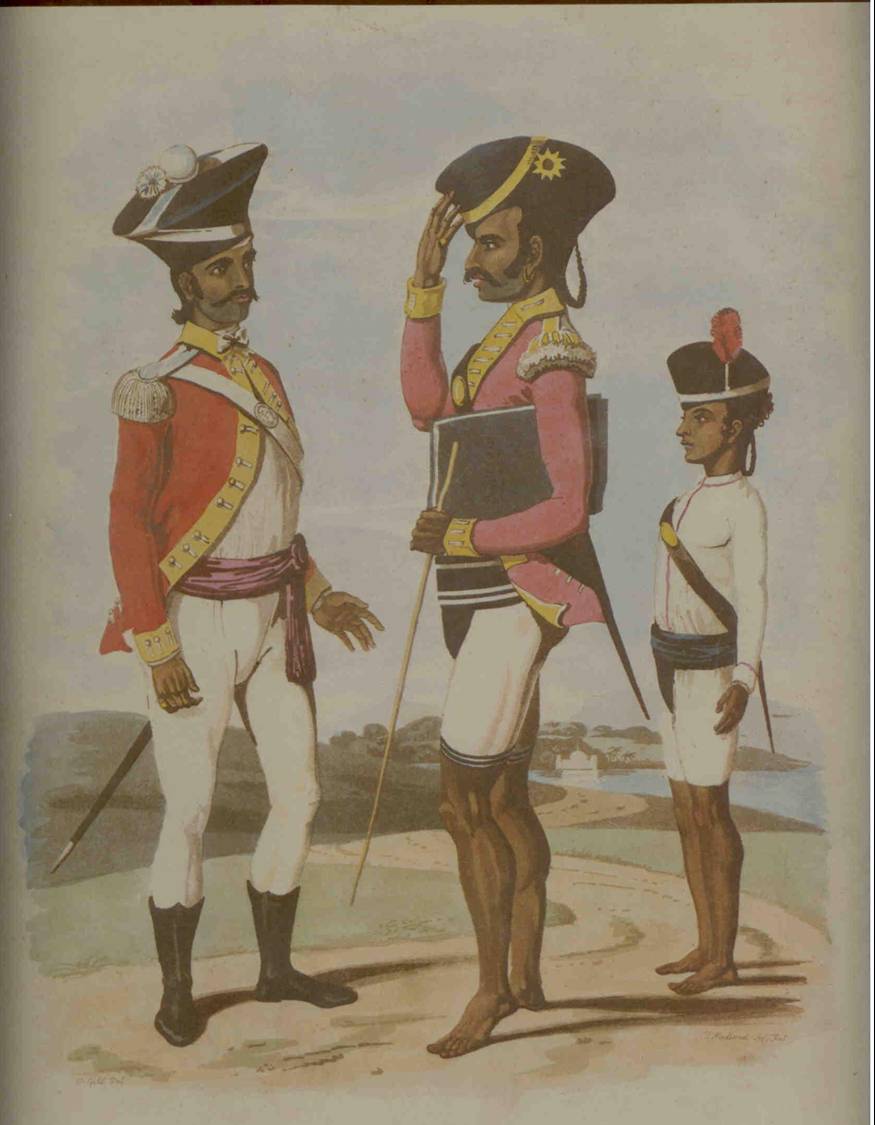
Shop Amazon - Create an Amazon Baby Registry
Sepoys of the Madras Establishment
from Charles Gold's Oriental Drawings



The "bell" turban in this picture was authorized for the Madras Native Infantry on March 15, 1797. It was issued beginning May 1 of that year.
It was not an entirely happy piece of headgear, and a new pattern was due to be issued in 1805. The sepoys, however, firmly refused to wear it. The principle objection was that it looked, to sepoys at least, too much like the style worn by Eurasians (i.e. half-castes), who were frequently the drummers in the Native Infantry. Besides racial and caste prejudices, the Eurasians were often Christians, and the sepoys felt that the new turbans were a subtle step towards forced conversion. The other objection was to the leather rosettes which were to adorn the turban. The Hindus were convinced they were cow leather, while the Muslims were certain they were pig. The C-in-C refused to give and the result was the Vellore Mutiny of 1806. After order was restored, the Madras Army decided hat design wasn't worth a mutiny and opted to retain the previous 1797 pattern. Leather rosettes (and plumes, for some reason) were forbidden, and the sepoys were also granted concessions in the wearing of beads and jewellery of caste significance, as well as mustaches.
As the reinstatement of the 1797 pattern turban was ordered July 17, 1806, it is sometimes wrongly held to be a new pattern, or the date when the "bell" turban was first authorized. TMP
Previous: Officers and Private of the Gun Lascar Corps, Madras Establishment, by Gold
Next: Muslim Officer, by Shoberl, 1820s
Back to Charles Gold's Oriental Drawings